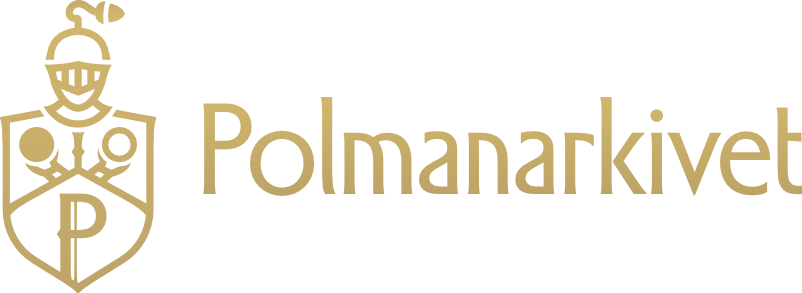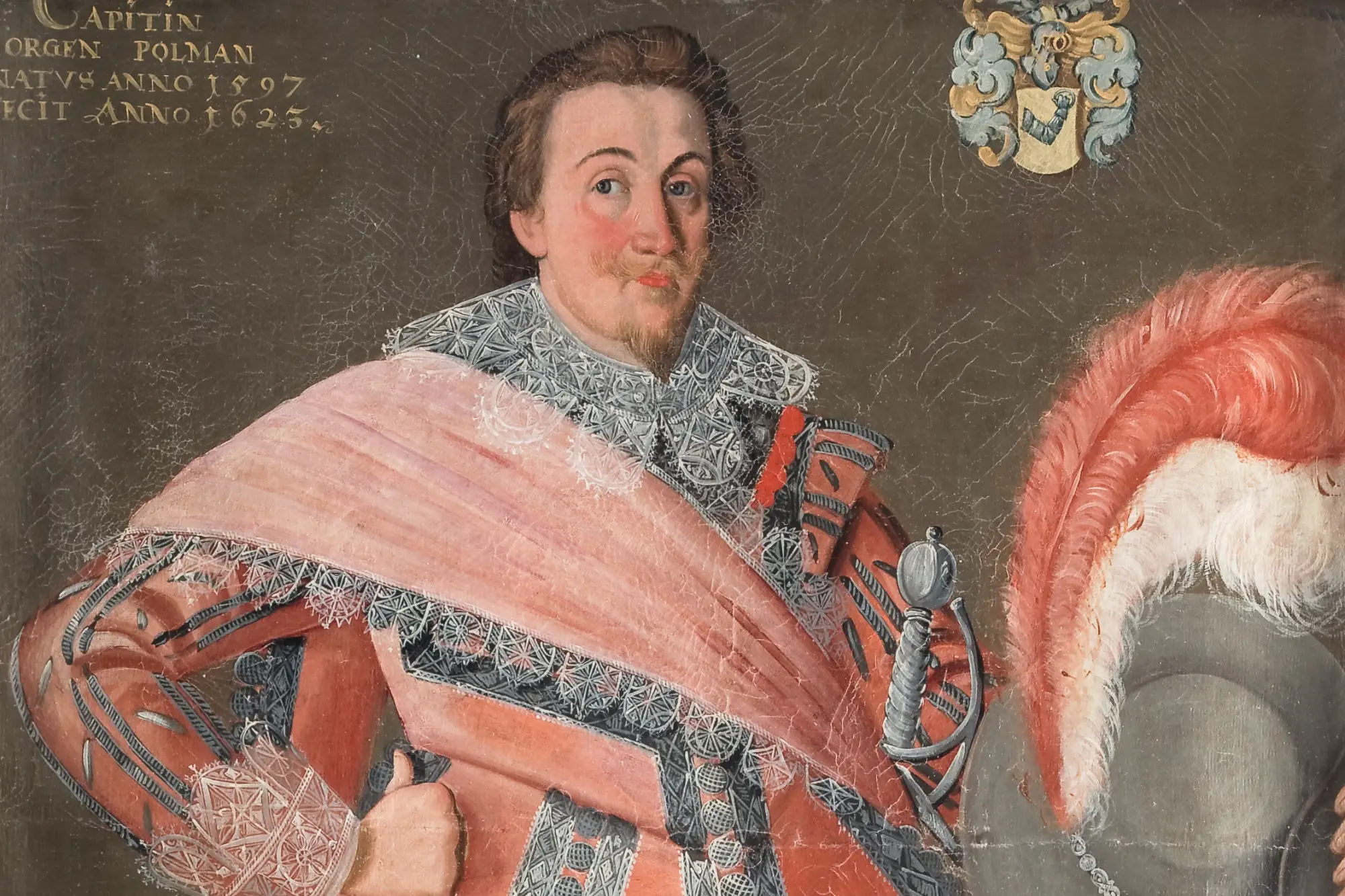The Volatile Nobleman
Johan Polman (knighted Påhlman), along with his siblings Gustaf and Anna Christina, was born circa 1623-25, probably in Sweden, to Jöran Polman the Younger and his wife Christina Lilliesparre. The three children possibly spent their childhood at the family manor Ugglansryd in Ryssby.
In 1632, upon the death of King Gustavus Adolphus, the crown passed to his daughter Kristina, then only five years old. She began to rule when she came of age in 1644, facing several challenges and bringing Sweden on the verge of bankruptcy. Johan and Gustaf, continuing the family tradition, served in the military. At this time, Johan was a driver in the noble veneer regiment during the Danish War.

However, in 1648, Queen Kristina advocated to end the Thirty Years’ War[[1]] through the Treaty of Westphalia, receiving indemnity and greatly enhancing the prestige of Sweden. She played an important role in positioning Sweden as an international, cultural country.[[2]] On 16 September 1650, four years before she abdicated the throne, Queen Kristina knighted the Polman brothers at Stockholm Castle, despite their evidential documents not being considered fully satisfactory.[[3]] Later, she also permitted their sister to be included in their nobility.
The family name thus transitioned to the more Swedish “Påhlman”, introduced on 3 October 1650 in the third (journeyman) class under the current No. 501. Later, in 1778, the family would be promoted to the second (knight) class which had been re-established. The original shield letter has been deposited in Riddarhuset, the House of Nobility in Stockholm, since 1918.[[4]]
Johan, meanwhile, rose from being a rider at the Småland’s Cavalry Regiment in 1651 to first cornet in 1655, lieutenant in 1656, and eventually cavalry master in 1659. He was reformed in 1661 – this referred to an officer whose position had been withdrawn and a lower salary offered due to dissolution of the unit.
He married Margareta Silfversparre, daughter of major Per Silfversparre (No. 99) and Magdalena von Scheiding, and they had eleven children over a period of twenty years. The children’s names were Fredrik (b. 1662), Christina Beata (c. 1666-1736), Magdalena (1668-1739), Göran (b. 1670), Catharina, Hedvig (1673-1749), Claes (1678-1704), an unnamed child (d. 1679), Carl Gustaf (1679-1757), Henrik (b. 1681), and Maria.
In April 1672, the couple “reconciled before the church tribunal and confirmed their reconciliation with embrace and handshake.”
Johan and Margareta’s marriage was a troubled one. On 24 February 1672, Johan wrote an “urgent letter” to the Bishop, alleging that his wife had left him ten days previously in the middle of the night, taking the children, maids and a number of possessions and causing him “distress and pain”. He wanted her to be found and action to be taken against her.[[5]]
A month later, Margareta also wrote to the Bishop, detailing various instances of abuse and ill-treatment by her husband and fear for herself and her children, requesting permission to leave him.[[6]] In April 1672, the couple “reconciled before the church tribunal and confirmed their reconciliation with embrace and handshake.”[[7]] Despite this, further letters by Margareta in 1687 indicate that the abuse by Johan continued, including unproven allegations that his wife had committed adultery.[[8]]
In December 1672, Johan signed as a witness a copy of the knighthood letter (Sköldebrev) for the family Gyllenhaal, first ennobled in 1652, and ancestors of American actor Jake Gyllenhaal. Presumably, he was well-acquainted with the family.[[9]] At some point during the Scanian War[[10]] of 1675-79, Johan received a letter presumably asking him to ensure that “all the common people here in Sunnerbo district […] meet next Friday, July 28, in Ljungby with rifles and 14 days’ food to march from there to guard posts”.[[11]]
In 1677, Johan bought the manor Väraboda — which had once belonged to his aunt and his sister — from its owner, Elin Stråle of Ekna. In 1682, Johan was granted permission to cut down four oak trees to rebuild parts of Ugglansryd that had been burnt, possibly during the Thirty Years’ War during which many estates in Småland were damaged.[[12]]
Johan Påhlman died in 1693 and is buried in Ryssby church’s sacristy.[[13]]
[[1]]: A highly destructive religious war in Europe between 1618-1648 that led to millions of deaths. It started within Germany’s Holy Roman Empire, but involved more countries in the 1630s, with Sweden supporting France.
[[2]]: Neil Taylor, Estonia: A Modern History (London: Hurst and Company, 2018)
[[3]]: On 31 July 1650, Queen Kristina directed that their documents to prove old nobility be reviewed by country marshal Svante Sparre, and should they be found satisfactory, to enrol the Polman siblings at the Knight’s House.
[[4]]: The coat of arms paintings were painted on copper plates. Those of nobility commissioned a painter to paint their weapon plates—called vapenplåtar—and each family took care of the painting of their weapon. The Påhlman weapon plate was painted by well-known artist Johan Assman, who was commissioned for many of the earlier plates.
[[5]]: “Växjö Domkapitel”, Sunnerboarkivet Archive: Rättsoch Tingshusväsende, series F1, vol. 6, filing 1672 no. 83, https://webtjanst.ljungby.se/klara/public/volume/VolumeView.jsp?VolumeID=37964
[[6]]: Domkapitel in Växjö, of Kullebo March 26, 1672
[[7]]: Växjö Domkap. Prot. 1667, pp. 384-85
[[8]]: Växjö Domkapitel, Filing 1687 no. 329/Växjö Domkapitel, Filing 1687 no. 327
[[9]]: “814 Gyllenhaal”, 5 December 1672, The Gyllenhaal Family Tree Project, https://www.gyllenhaal.org/AdelsbrevEnglish.html
[[10]]: Part of the Franco-Dutch and Northern Wars seeking the union of Denmark, Norway, Sweden and Brandenburg.
[[11]]: Vigo Edvardsson, Snapphanekriget 1675-1679: Dokument från en orolig tid [The Snapphane War 1675-1679: Documents from a troubled time], Volume 3 (Tyringe: Göinge-bladet, 1977), 154
[[12]]: Svenska Turistföreningen Årsskrift 1921 [Swedish Tourist Association Yearbook 1921], 137
[[13]]: “Påhlman nr 501”, Adelsvapen-Wiki, https://www.adelsvapen.com/genealogi/Påhlman_nr_501, accessed: 17 March 2022




